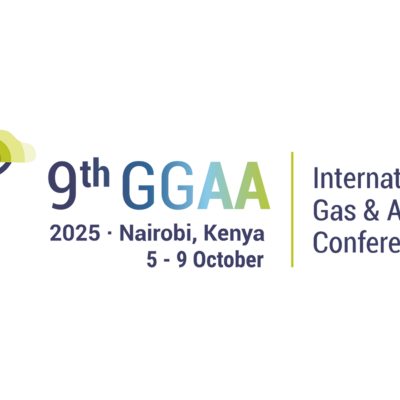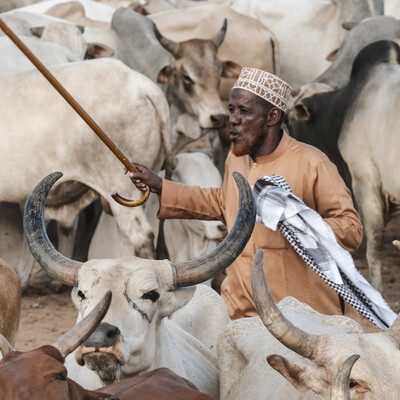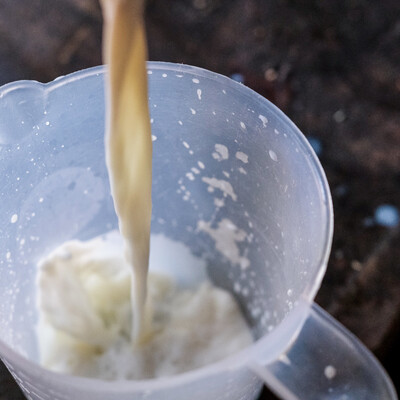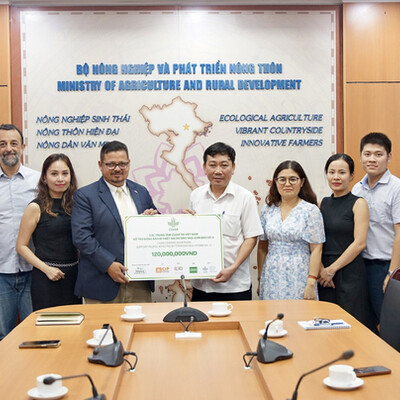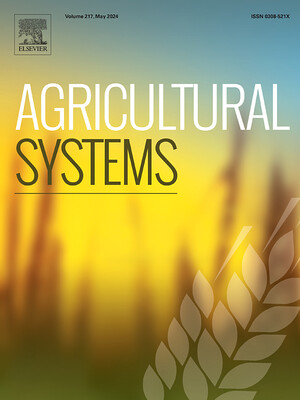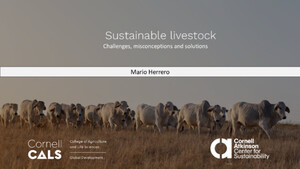
Thursday Links (October 2019)
A monthly round-up of recent articles, blog postings and tweets about livestock, aid and other topics that may be of interest to International Livestock Research Institute (ILRI) staff and partners, compiled by David Aronson.
Isabelle Baltenweck, an agricultural economist leading the Policies, Institutions and Livelihoods program at the International Livestock Research Institute (ILRI), published an op-ed in the Financial Times arguing that it is ‘time we recognized the vital role livestock plays across the world’s developing economies’. The notion that alt-meats will be a panacea to overcome the negative environmental and health impacts associated with the world’s livestock systems rests, she says, ‘on the skewed perspectives of North Americans and western Europeans—and misses a big part of the story’.
Climate Change
Al Gore warns us that the main way most humans will experience climate change is through its impact on food and says that Africa will be hit hardest:
Africa, by mid-century, will have more people than either China or India. And by end of century, more people than China and India combined. And you combine that with the impact of the climate crisis on subsistence agriculture in Africa, the importance of subsistence agriculture in Africa, the poor quality of the soils, the persistent problems of land tenure, and the economic and social structures that discourage good stewardship of the land, then, wow. We really need to wake up quickly to the serious crisis that could develop there.

Temperature change 2014-2018 compared to 1880-1899
The Washington Post has a long, multi-media piece on how different parts of the world are warming up: The fastest-warming zones include the Arctic, much of the Middle East, Europe and northern Asia, and key expanses of ocean. A large part of Canada is at 2C or higher. It follows up with this long-form piece on how warming is affecting people and agriculture in Siberia.
Yale Environment 360 has its long multi-media piece on how the world’s climate zones are shifting. The world’s tropics are growing by 5 kilometers per year, for example, and the Sahara has grown by 10 percent since 1902. And qzAfrica finds that the Sahel region is especially vulnerable to climate change, compounded by weak governance. In the past, pastoralists may have delayed the desertification of the Sahara.
The focus on individual lifestyle choices (such as going flexitarian) simply aren’t enough to save the planet. Collective, governmental action is needed, says this essay in Time magazine:
‘The bigger issue is that focusing on individual choices around air travel and beef consumption heightens the risk of losing sight of the gorilla in the room: civilization’s reliance on fossil fuels for energy and transport overall, which accounts for roughly two-thirds of global carbon emissions. We need systemic changes that will reduce everyone’s carbon footprint, whether or not they care’.
María Sánchez Mainar of the International Dairy Federation (IDF) makes the case that climate warming not reversible through food adaptation: ‘A person who chooses to consume an exclusively vegan diet for a year reduces his or her CO2 emissions by 0.8 tonnes of CO2 equivalent compared to someone who consumes a balanced diet that includes dairy and meat products. However, one transatlantic flight emits 1.6 tonnes of CO2 equivalent’. And in USA Today, an op-ed argues that we don’t need to become vegan to save the planet; we need to eat meat more responsibly.
On climate change, we need adaptation as much as we need mitigation, or we face the ‘prospect of a “climate apartheid”, in which the rich insulate themselves from the impacts of the climate emergency while the poor and vulnerable are abandoned to their fate’.
Climate change skeptic Bjorn Lomborg says that the rhetoric about climate change has become divorced from the science; he suggests that we will solve the problem through innovation, not restriction.
Could feed additives significantly reduce the amount of methane cows burp into the atmosphere each year? A Dutch company says that adding ¼ teaspoon of its (secretive) additive to a cow’s feed each day suppresses the enzyme that triggers methane production in a cow’s rumen.
This article on carbon-neutral beef argues that cattle can play an important role in mitigating climate change: ‘If done right, grazing can heal grasslands and enable them to stow away more carbon from the atmosphere, even becoming carbon-negative systems’.
We often draw a bright line between the rich OECD countries, where meat consumption should arguably be reduced, and poor countries, where animal-source foods remain a vital part of the diet and livelihoods of millions. But this article in The Economist suggests that Chinese need to start curbing their consumption of meat: ‘China’s growing hunger for red meat, specifically, has seen its beef imports grow 40-fold between 2010 and 2018. The boom threatens Latin American forests and Arctic ice caps alike, as cattle-rearing prompts land-clearing and emits greenhouse gases’. This article in The Wire suggests that well-to-do Indians follow suite. (But this Economist article from May celebrates Africa’s growing meat consumption.)
Climate change will worsen Nigeria’s food crisis, where an estimated 46 million people lack access to food that is safe and cheap, and 44 percent of children under five are stunted.
Nutrition
This is a compelling graph: Meat consumption per capita and stunting rate estimates in different countries:
Some 2.6 million Kenyans face hunger and acute malnutrition as a result of an ongoing drought that is affecting more than half of the country.
The American Academy of Pediatrics says that plant-based milks are causing harmful nutritional deficiencies in children.
Alt-meats and veganism
Vegan advocacy groups are pressuring university canteens and cafes in England to cut meat from their menus. New York City public schools may ban all processed meats. And Harvard University is following Cambridge University’s lead and ‘going vegan to save the planet’. The city of Oslo will also ban meat from its primary and secondary schools by 2023. On the other hand, a group calling itself the Animal Agriculture Alliance has published a book titled “What Would Jesus Really Eat?” that makes the case that the Bible encourages meat consumption.
Nestlé has entered the meatless burger arena with something they are calling the Awesome Burger. This is significant because they are one of the first major food companies to enter the market (most meat substitute companies are start-ups, albeit well-funded ones).
McDonalds is testing Beyond Beef burgers in stores in Ontario, Canada. But one analyst suggests it should focus on faux chicken, instead.
Vegan ice cream is the new frontier in animal food substitutes.
The New York Times taste-tested the new alt-burgers; of the batch currently on the market, it prefers Impossible Burger. Meanwhile, the Washington Post takes a hard look at what’s in them: ‘a long list of tough-to-pronounce ingredients—which meat advocates have seized on to assert that plant-based meat is highly processed’.
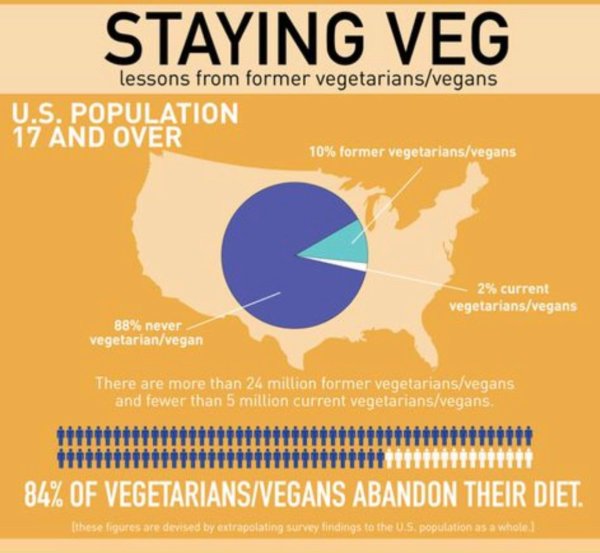 Meanwhile, statistics suggest that very few people stay vegetarian or vegan for long:
Meanwhile, statistics suggest that very few people stay vegetarian or vegan for long:
Communicating Science
CABI, the inter-governmental, not-for-profit organization that works on problems in agriculture and the environment, has a new book out titled, The Science of Communicating Science: The Ultimate Guide. Its goal is to help scientists communicate their work to society. And the American novelist Cormac McCarthy, who has for many years edited faculty members and postdocs at the Santa Fe Institute (SFI) in New Mexico, shares a few thoughts on how to write a great science paper.
Last month the Award Fellowship launched in Nairobi a cohort of One planet Fellowship awards for 45 young scientists doing research for climate smart agriculture on the African continent.
Miscellaneous
Brazil’s plans to develop a herd of genetically dehorned dairy cows was abruptly dropped when unexpected alterations in their DNA turned up, making them subject to stricter GMO regulation.
Prehistoric babies were bottle-fed with animal milk more than 3,000 years ago, according to new evidence.

Photo by Chris de Bode for Concern Worldwide
Some beautiful photos about food and hunger commissioned by the NGO Concern Worldwide and taken by a trio of photographers, including Chris de Bode, who visited us last year to take photos for CGIAR, can be seen here and here.
The nutritive potential of eating insects is one of those topics editors in the West like assigning their junior reporters every couple of years, I suppose as a way of hazing them. Here are recent efforts from the New York Times and the BBC. For the record, fried termites aren’t bad: They taste like Cheetos.
A scientist at Texas A&M has found a way to genetically engineer cotton for use as a human food. It’s said to taste delicately nutty.
The Chinese are breeding super-pigs said to be the size of polar bears, in part as a response to inflated pork prices due to African swine fever decimating pig populations.
A good overview from Wired on how farm animals may be the next big antibiotic threat.
This article from authors at the influential DC think tank Center for Global Development says that Western donors spend too much on rural areas in Africa and not enough on cities: ‘The West seems unaware that Africa’s future is urban’ they say.
This is a quirky little video from the New York Times about a family in the heart of Mumbai who decided to adopt a chicken. It will not come as a surprise to many ILRI staff that chickens do not make great pets.
Your word of the day last month was alektorophobia, or fear of chickens. This month, we learn the fear isn’t entirely irrational. From Australia comes word that a 76-year old woman was killed by a rooster that delivered a lethal strike to her leg.
These beautiful maps from the colonial era illustrate trade routes and cattle populations in North Africa and the Sahara: Skinny camel, sitting camel, and fat camel denote different sizes of herd.
This month’s featured photo is from the Sony World Photography Awards, as featured in the Atlantic Monthly. It is titled Sheep Herd, ‘The hard and dusty journey of a sheep herd in Bitlis, Turkey’ by F. Dilek Uyar.









